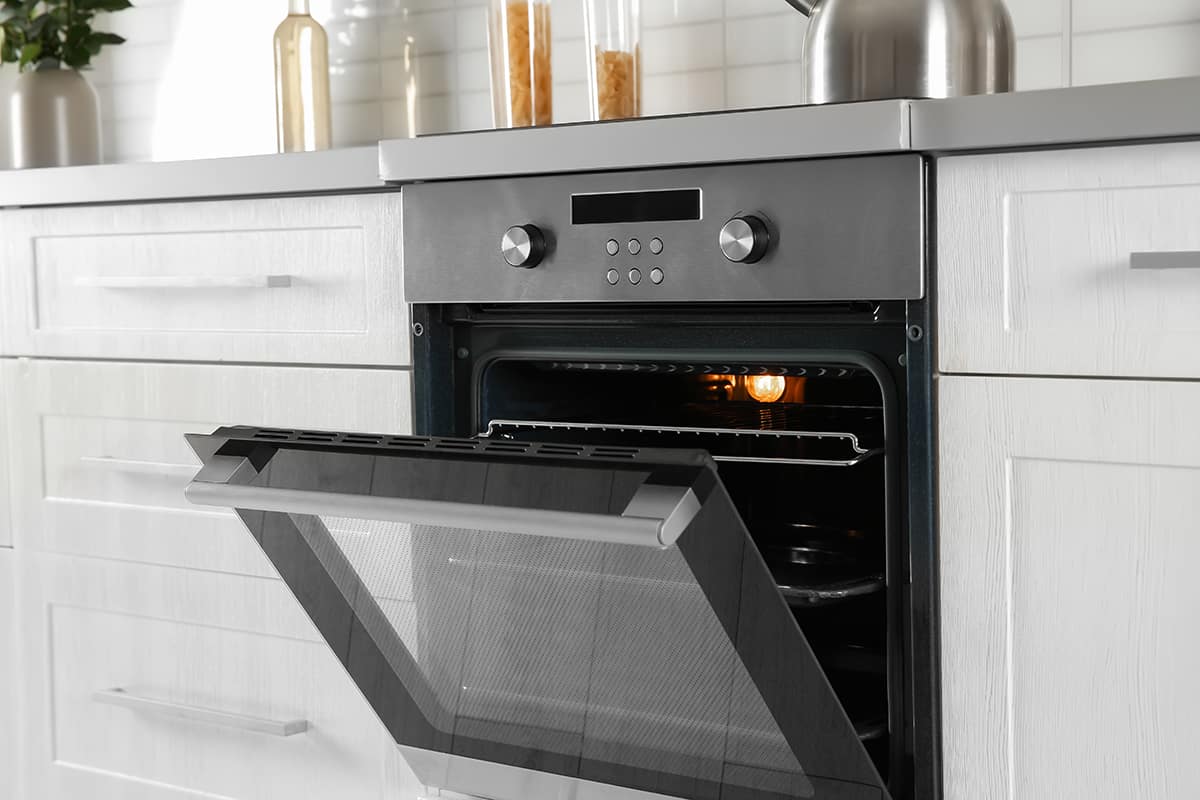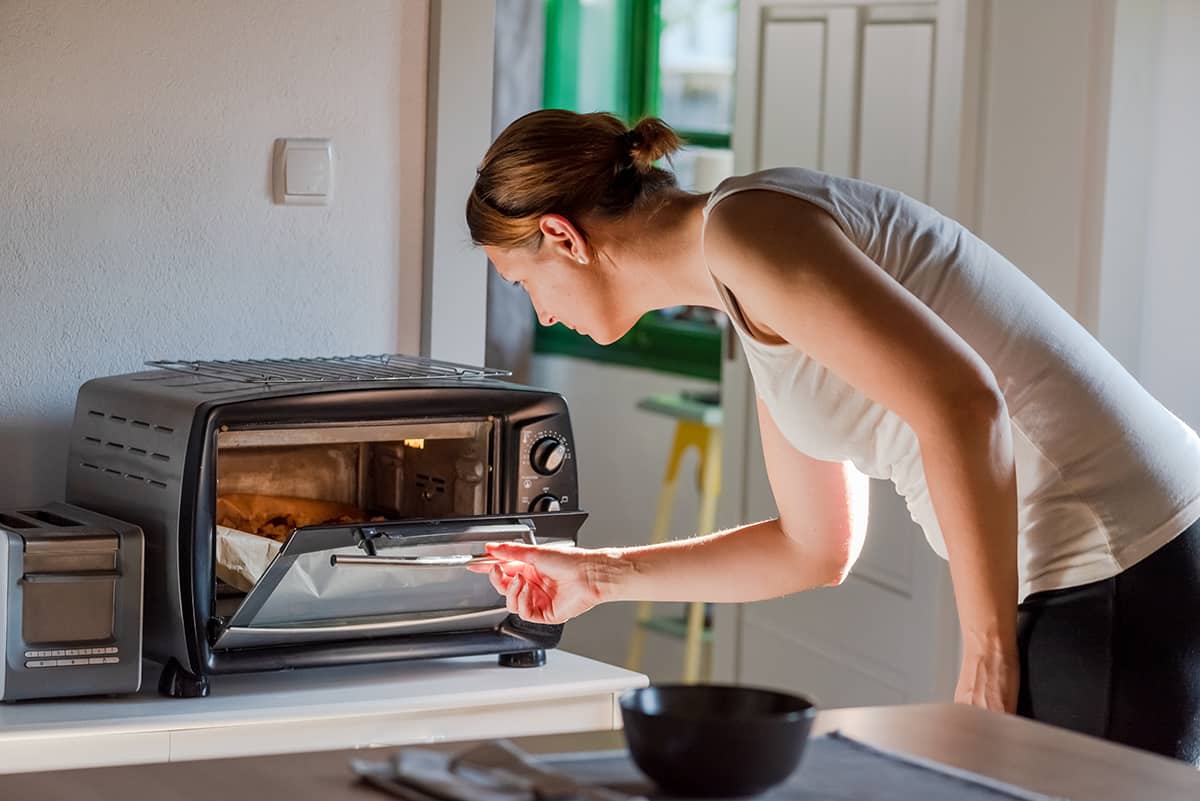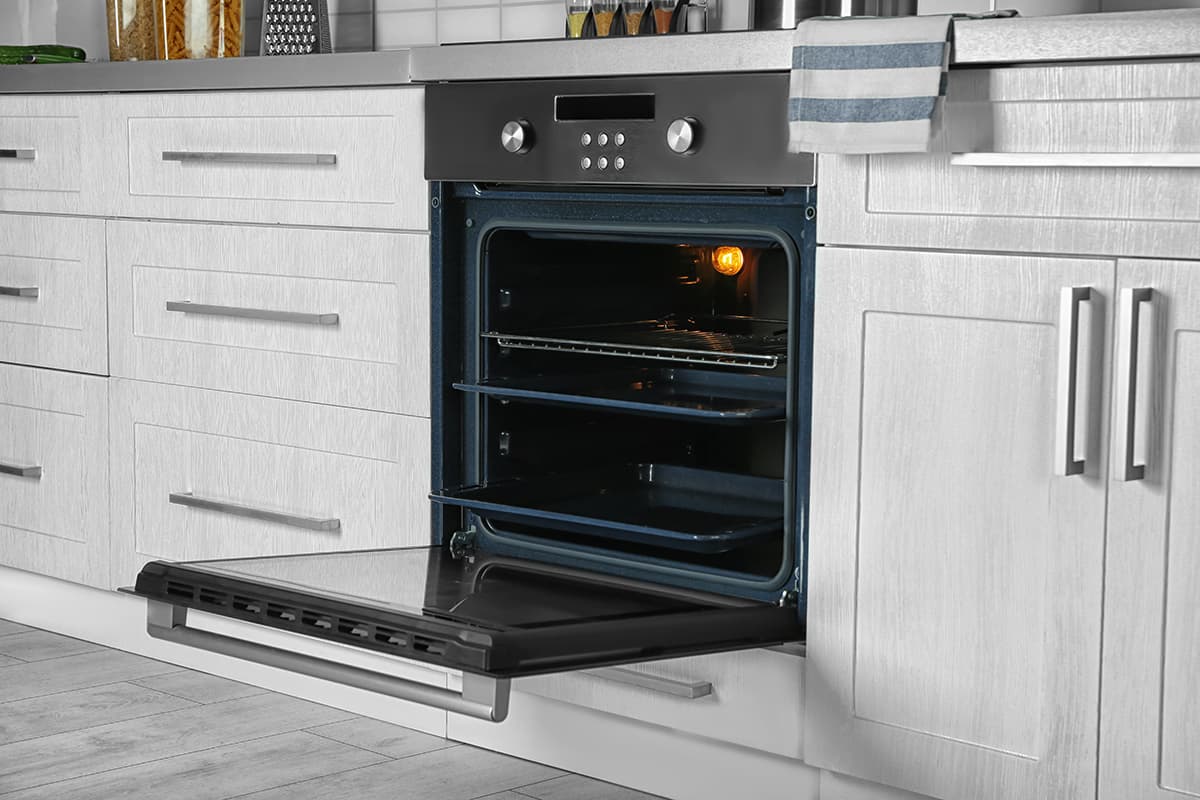When you are renovating your kitchen, you are likely to consider which type of oven you want to install. Most modern homeowners opt for a convection oven due to the advantages they offer compared with regular ovens. If you have never owned a convection oven before, you may be wondering whether they need to be vented and what else you need to know about these types of ovens.
A convection oven does not need to be vented, provided it has sufficient room around the appliance for ventilation. If your convection oven is installed with enough clearance behind it and around the sides, then it is perfectly safe to use without any venting in place.
Benefits of a Convection Oven
Convection ovens are the most popular type of oven in modern kitchens. They offer a range of benefits that make them more attractive to chefs and home cooks compared with ovens that do not have a fan. Many convection ovens have a convection setting, allowing you to choose between times when you want the fan on and times when you don’t.
Faster cooking
Convection ovens cook food faster than those without fans. Although the food is cooked at the same temperature, the fan circulates the air around the food to create the effect of the food heating more quickly.
Compare this to a cold day without any breeze and a cold day with a strong breeze. Even though the temperature is the same, when the cold air is being blown against your face, you will feel colder compared to the exact same conditions without a breeze. This is how a fan cooks food quicker. Typically you can expect a convection oven to reduce normal food cooking times by 25%.
No hot spots
An oven without a fan usually develops hot spots, resulting in uneven cooking. You will be able to tell if your oven has hot spots when your pizza has burnt cheese on one side and barely melted cheese on the other. You might also find that a tray of oven fries comes out burnt in one corner and perfectly cooked in another.
A convection oven prevents this problem because the circulating air helps to ensure the heat is spread around more evenly. The result is a much more even cooking process and better-cooked food.
Energy efficient
Since a convection oven cooks food more quickly, they are more energy efficient. You won’t need to have the oven switched on for as long as a regular oven, therefore cutting down your energy consumption along with cutting the cost of energy bills.
Versatility
Convection ovens, also known as fan ovens, give the user the option of cooking with or without the convection setting. This makes the oven much more versatile compared with a traditional oven and allows the user to have more control. This is great because different types of foods can benefit from the convection setting more so than others.
How Do Convection Ovens Work?

Convection ovens use a fan to circulate hot air and cook food faster.
Convection ovens cook using convection, which means that the oven is heated by a series of fans that move air around inside it. This can save you energy compared to traditional electric or gas ovens because more of your food cooks at once, rather than heating up only part of the grill or baking pan at a time. Convection also reduces cooking times by circulating heat evenly throughout your food.
Because they’re so efficient, convection ovens are great for saving energy in small kitchens with limited counter space — but as with anything else, there are downsides (and even dangers) associated with this convenience!
What is a Venting System?
 Venting systems are used to remove excess heat from the oven. A fan inside the oven circulates air to circulate hot air out and bring cool air in. This is known as convection cooking, which differs from traditional baking methods because hot air flows from top to bottom instead of left to right.
Venting systems are used to remove excess heat from the oven. A fan inside the oven circulates air to circulate hot air out and bring cool air in. This is known as convection cooking, which differs from traditional baking methods because hot air flows from top to bottom instead of left to right.
Venting systems are also important for getting rid of any smoke that might be produced during use. Even though most models have filters, there’s still a chance for some particles to get through if you’re using an oil sprayer (or even just cooking over high heat). Venting makes sure that these particles don’t settle in your home or apartment after use!
Should a Convection Oven Be Vented?
A convection oven does not need to be vented, and in fact, the majority of convection ovens do not have the capability to be directly vented outside. However, many homeowners decide to have an extractor fan in their kitchen which will be vented to the outside of the house.
The extractor fan is able to remove odors and grease particles from the air, which could have been caused by cooking in both the oven and on the stovetop.
Benefits of Venting a Convection Oven
Though a convection oven does not need to be vented, you may want to use a vented extractor fan for a variety of reasons in your kitchen. Here we look at the benefits of having a vent near your convection oven.
Reduce air pollution
An extractor fan that is vented out of the house can help to filter the air and remove any air pollution that might exist in the kitchen. This can improve the quality of the air, resulting in cleaner and healthier air for you and your family to breathe. If your cooking has resulted in smoke in the air, this can be very uncomfortable to breathe, and often it is enough to make your eyes water. A vented extractor fan will help to suck in the smoke and expel it outside, making for a better environment in your home.
Remove grease
We cannot see grease droplets in the air, but we know they are there. You might have noticed that the area around your oven or stove top gets coated in a thin layer of grease after cooking, and this isn’t due to spillages, but instead, it is airborne grease that eventually falls down and settles on the countertops.
By using a vented fan in the kitchen, the grease in the air is sucked through the fan and filtered out. This can help to keep grease and oil to a minimum in your kitchen and make for a cleaner environment. You will also not have to clean as heavily compared to if you do not have a vented extractor fan.
Limit lingering odors
One of the main benefits of a vent in the kitchen is that it works to remove odors associated with cooking. Although you might enjoy the aroma of a meal while it is cooking and while you are eating it, the smell that lingers afterward and into the next day can be less than appealing. If you have cooked with fish or with a selection of herbs and spices, the smell can be particularly pungent. In this case, a vented extractor fan is great for extracting the odors from the room and eliminating the smell from the home.
Can You Install a Vented Range Hood?
If you’re installing a new range, there are two ways to go about getting it hooked up. The first is to use a vented range hood. A vented range hood can be helpful if you want to vent cooking fumes from your gas stove out of your kitchen.
However, most homeowners don’t install these types of hoods because they can be very expensive to install and require professional installation (they are not DIY-friendly).
The second option for installing your new range is an uncertified ducted system or ductless direct ventilation system. These systems take the fumes that come off your stovetop and exhaust them directly through the wall without venting outside the house.
This saves you money on heating bills since it doesn’t draw cold air into the room through an open window like an open damper would do when using a vented system in another part of your home.
Other Types of Ovens to Consider
If you’re not sure whether you want a convection oven, here are some factors to consider.
Think carefully about the fuel source in your home – gas or electric – and how a convection oven would work with that fuel source to meet your cooking needs.
Conventional ovens

Conventional ovens are the ones you’ll find in most kitchens, and they’re best for baking and roasting. When using a conventional oven, it’s more of an art than a science to get the most out of it—you’ll need to keep track of how long your food has been cooking, what temperature you’ve set it at, and whether or not the door is open during that time.
The longer something cooks in an open conventional oven (with no heat transfer from outside), the less even heat distribution there will be when you do close the door again. This can result in unevenly cooked foods!
Well-designed convection systems combine hot air circulation with forced air circulation; this means that hot air is circulated around food as well as forced through it by fans at different speeds depending on what stage of cooking each type of food is at.
Convection technology helps improve flavor development by evenly distributing warm air around food so that every part receives equal exposure to heat energy; this results in firmer crusts on loaves of bread while maintaining moisture levels inside fillings like meat pies (no soggy bottoms!).
It also helps reduce cook times compared with traditional fan-assisted models because your main work has already been done before foods even reach temperatures needed for crisping up their exteriors!
Gas ovens

Gas ovens are the most common type of oven, and they’re often used in homes. They use natural gas to heat up the inside of the oven and cook your food. Gas ovens are also known as gas ranges or gas stoves.
Gas ovens have a thermostat that controls how hot it gets, so you can set a specific temperature and be sure that your food will cook at that temperature for as long as it needs to be cooked.
For example, if you want to bake cookies at 325°F (163°C), all you have to do is set your timer, turn on the heat setting on your gas range/oven, and wait until your timer goes off!
Electric ovens

Electric ovens are becoming more popular, and they’re usually cheaper than gas ovens. They’re powered by electricity, and they typically have an even temperature throughout their cavity. The downside to this is that electric ovens tend to be more expensive to buy and operate than other types of ovens.
Electric ovens also take longer for preheating than gas or induction models do. Some electric models don’t offer convection baking, which means that food cooks slower in them compared to other cooking methods—but if you want your baked goods fluffy and delicious, convection would probably defeat the purpose anyway!






